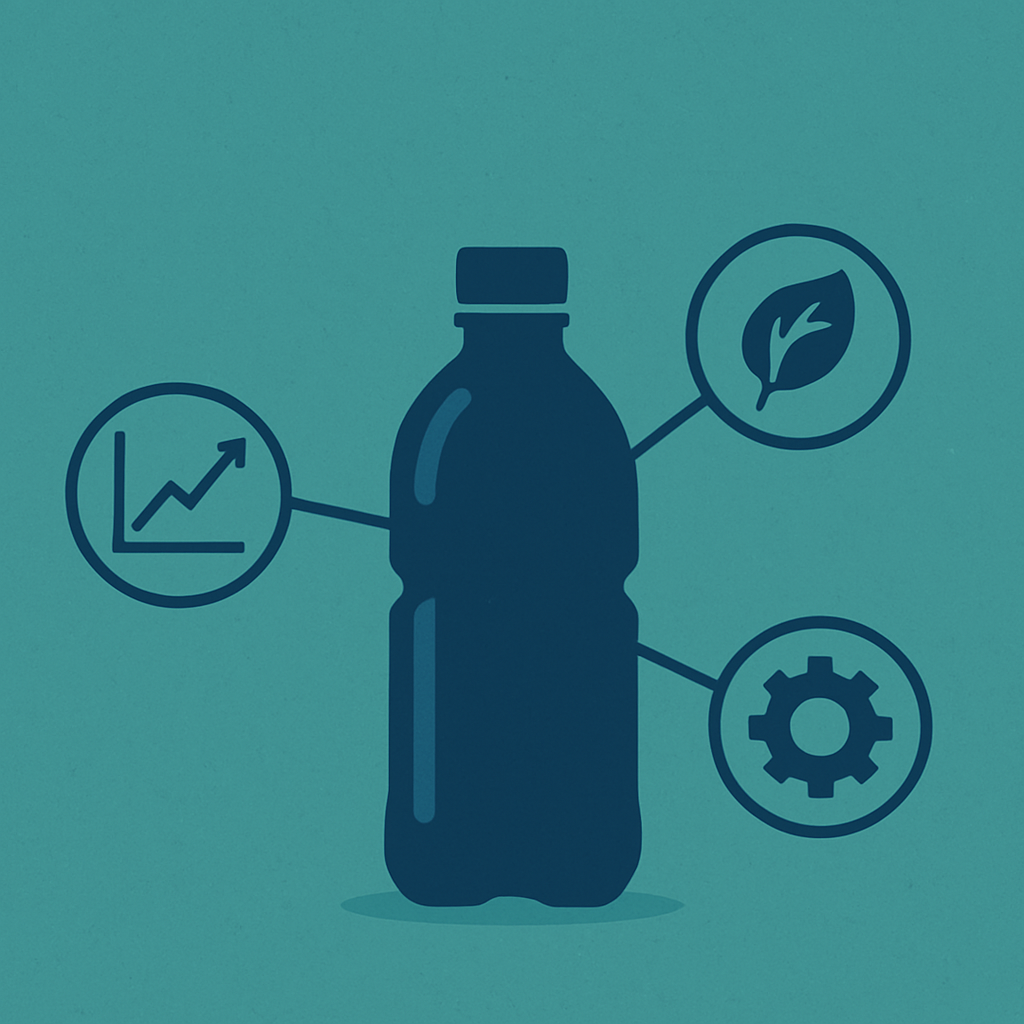Beyond the Bottle: How Integrated Design Thinking Delivered Performance, Sustainability, and Producibility
At PBA, we believe innovation isn’t just about the product, it’s about the process. Recently, we partnered with a client to develop a new HDPE bottle for a personal care line. Their goals were ambitious: reduce environmental impact, improve shelf strength, and avoid costly tooling changes late in development.
This is a look back at how we helped them get there by embedding Life Cycle Assessment (LCA), stress analysis, and tooling design techniques early in the New Product Development (NPD) cycle.
1. Starting with Impact: Life Cycle Assessment to Guide Smart Design
Rather than treat sustainability as a checkpoint at the end, we used LCA modeling as a foundation for early design choices.
- We compared virgin HDPE, 50% PCR, 100% PCR, and HDPE enhanced with a biodegradable additive plus factoring in carbon footprint, resin sourcing, and recyclability.
- The biodegradable additive blend offered the most significant environmental impact reduction while maintaining processability.
- We collaborated with the brand and marketing teams opting for in-mold labeling that preserved recyclability and cut weight.
- Light-weighting efforts, backed by scenario modeling, allowed us to reduce wall thickness by 9% without compromising functional performance.
2. Virtual Proving Grounds: Stress Analysis to Optimize Performance
To avoid over-engineering (or under-performing), we used FEA tools during concept refinement.
- Capping torque and squeeze force simulations helped us adjust shoulder angles and panel geometries.
- A top-load analysis highlighted where minor geometry changes—like a stronger heel radius to prevent crush under warehouse stacking.
- For regions with repeated consumer use, we evaluated fatigue stress, especially around the neck and shoulder transitions.
This analysis allowed us to refine the design before tooling, which saved weeks of iteration and multiple prototype cycles.
3. Making It Real: Tooling Design Collaboration
Too often, tooling considerations are pushed downstream. In this case, we pulled them forward.
- We worked alongside the molder to align draft angles and gating strategy with their multi-cavity tool setup.
- Mold flow simulations revealed an early venting issue near the base, which was corrected before steel was cut.
- By considering cooling channel layout and cycle time impacts, we helped reduce estimated mold time by over 10%.
The result? A clean T1 shot with minimal corrections—a milestone we’re always proud to hit.
Conclusion: Integration Wins
This project proved again that the best results happen when cross-functional disciplines are aligned from the start. By using LCA insights to guide material and format decisions, stress analysis to tune geometry, and tooling collaboration to ensure moldability, we helped our client launch a bottle that was:
– 9% lighter,
– 50% PCR and Biodegradable Additive Enhanced,
– Fully recyclable, and
– Tool-ready on the first try.
Innovation isn’t just what we create—it’s how we create it. Let’s build better from the beginning.

